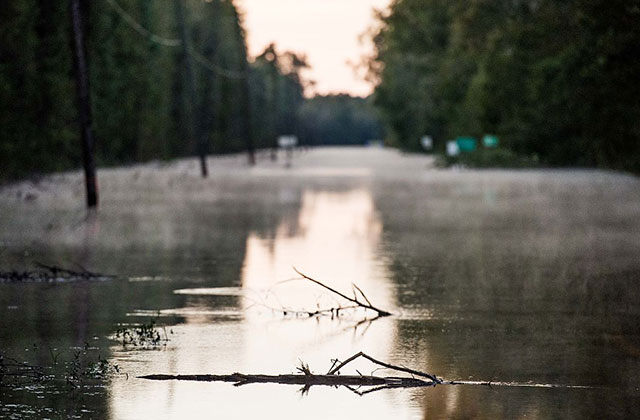Hurricane Matthew is over, but its destruction continues. Now, the North Carolina Department of Environmental Quality is looking into what’s left of the state’s 2,100 hog farms—and the pits filled with the animals’ excrement.
Per The Washington Post:
An incalculable amount of animal waste was carried toward the ocean. Along the way, it could be contaminating the groundwater for the many people who rely on wells in this part of the state, as well as threatening the delicate ecosystems of tidal estuaries and bays.
However, the North Carolina Pork Council announced Friday (October 14) that zero hog lagoons were breached. Eleven farms did have their lagoons “inundated,” but the statement read, "the majority of the wastewater will remain in the lagoons as flood waters recede.”
It continues:
“The number of hog lagoons that have been flooded represents less than ½ of one percent of North Carolina’s 2,100 permitted hog farms. It also represents a decrease of nearly 80 percent when compared to the number of lagoons (50) that were flooded during Hurricane Floyd. This shows that the proactive steps we have taken since Hurricane Floyd are working.
Environmental activists in the state have long pointed out the dangers of these ponds, particulary their disproportionate impact on communities of color. They allege that the industry sprays the waste in nearby fields before putting it in ponds. Exposure to the substance can cause eye irritation and breathing problems to people who are nearby. On October 5, environmentalists headed to the District to demand the EPA investigate the state’s hog industry.
“What this flooding does is really bring to light all the human health and environmental consequences of letting them have these open pits of [fecal] waste just sitting out there,” said Mae Wu, an attorney with the Natural Resources Defense Council, to the Post.
In Haiti, farmers are facing a different problem: loss of livestock, washed-away fields and destroyed fishing boats, according to Grist. The deathtoll in the region is over 1,000 but expected to increase as food becomes the next obstacle for Caribbean Islanders.
(H/t The Washington Post, Grist)
